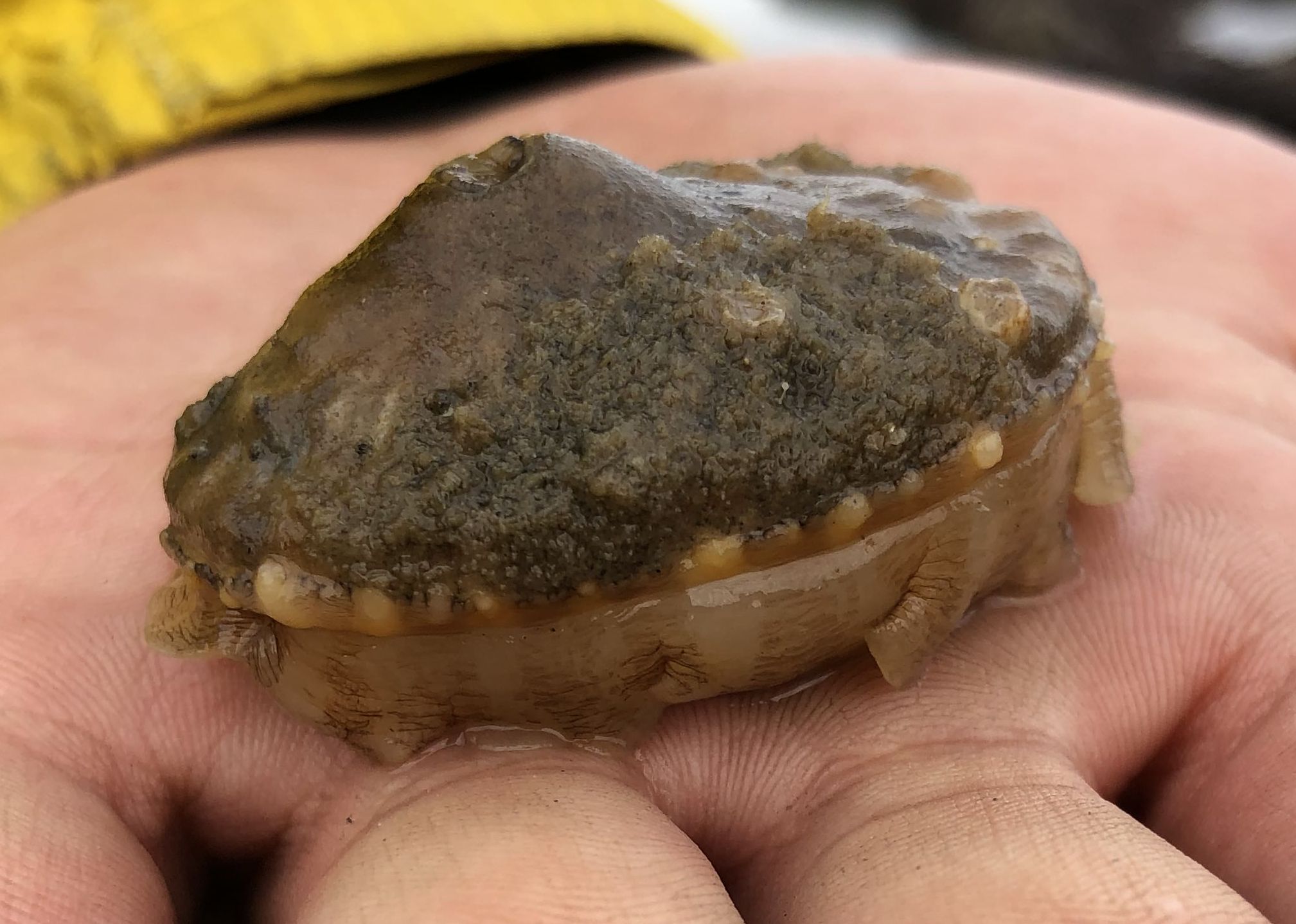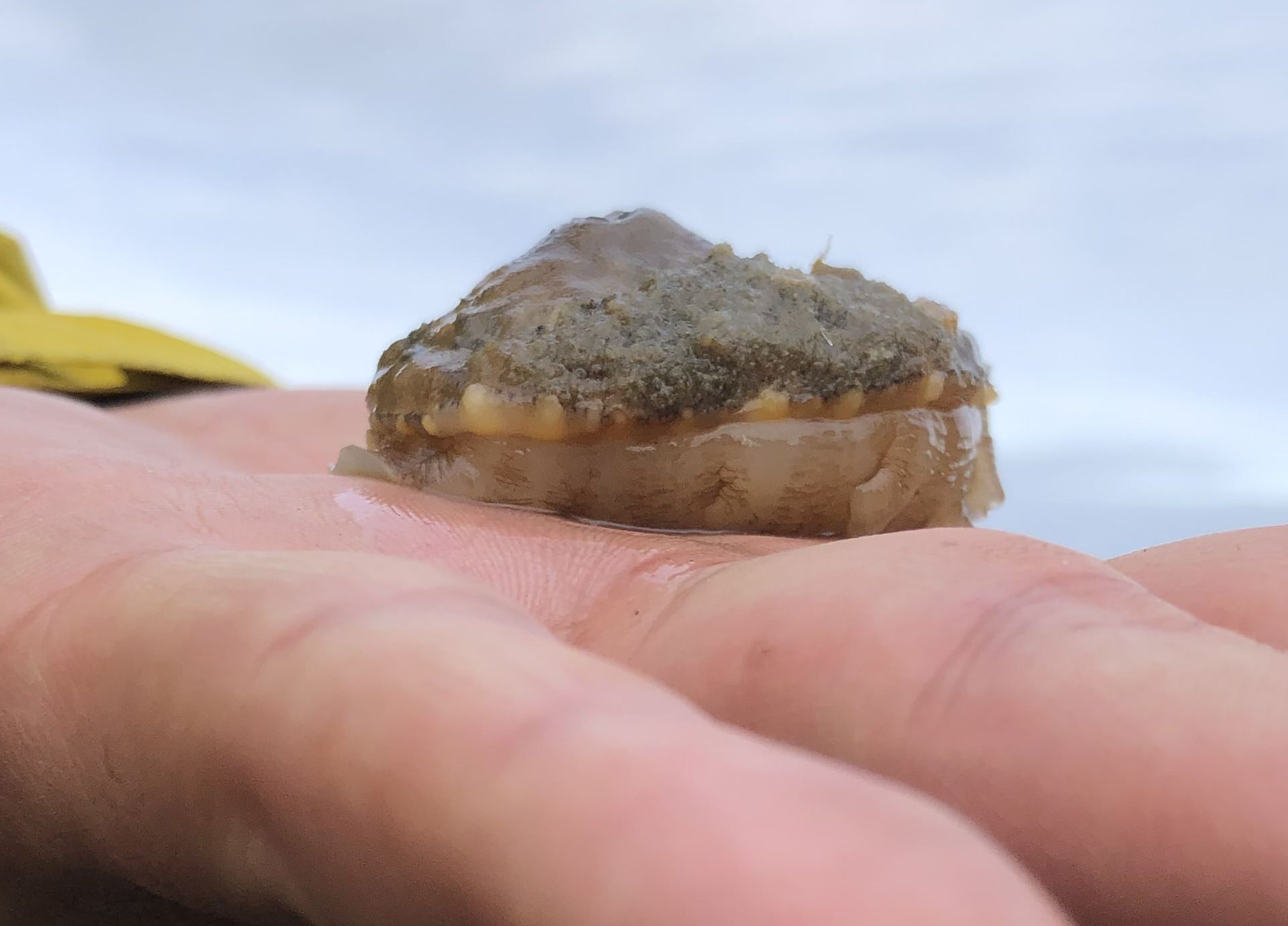Diodora asperaCommon name(s): Keyhole limpet, Rough keyhole limpet, volcano limpet |
|
| Synonyms: | |
| Phylum Mollusca
Class Gastropoda Order Archaegastropoda Suborder Pleurotomariina Family Fissurellidae |
|
| Diodora aspera at Rosario | |
| (Photo by: Dave Cowles, 1997) | |
How to Distinguish from Similar Species: In Puncturella and Fissurella species the dorsal hole is an elongated slit. Megathura crenulata (the giant keyhole limpet) lives farther south, grows much larger, and the mantle covers much to all of the shell when the animal is alive.
Geographical Range: Afognak Island, Alaska to Camalu, Baja California.
Depth Range: Low intertidal to subtidal
Habitat: Common in rocky areas all along the coast
Biology/Natural History: Species is omnivorius but prefers encrusting bryozoans. Extends its mantle extremely when it encounters a seastar predator (such as Pycnopidia, Leptasterias, Pisaster, or Orthasterias) so that the shell is largely covered and the seastar has no place to grab onto the shell. Often contains a symbiotic polychaete worm Arctonoe vittata (picture) in its mantle cavity which may bite the seastar as well. Diodora's blood contains hemocyanin, has a low pH (7.1) and no Bohr effect.
| Return to: | |||
| Main Page | Alphabetic Index | Systematic Index | Glossary |
References:
Dichotomous Keys:
Kozloff,
1987, 1992
Smith and Carlton, 1975
General References:
Kozloff,
1993
Morris
et al., 1980
Niesen,
1994
Scientific Articles:
General Notes and Observations: Locations, abundances, unusual behaviors, etc.:
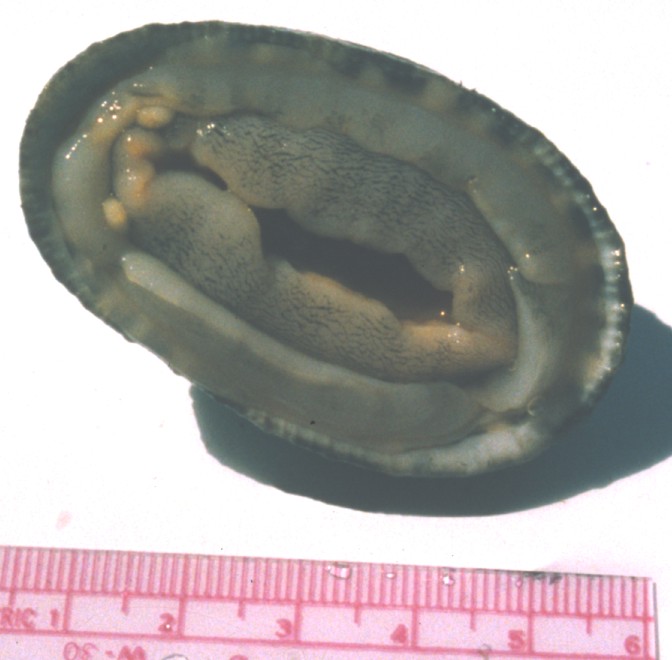
View of the underside of the animal showing the foot, head with
antennae
(left), mantle cavity, and mantle. Dave Cowles 1997
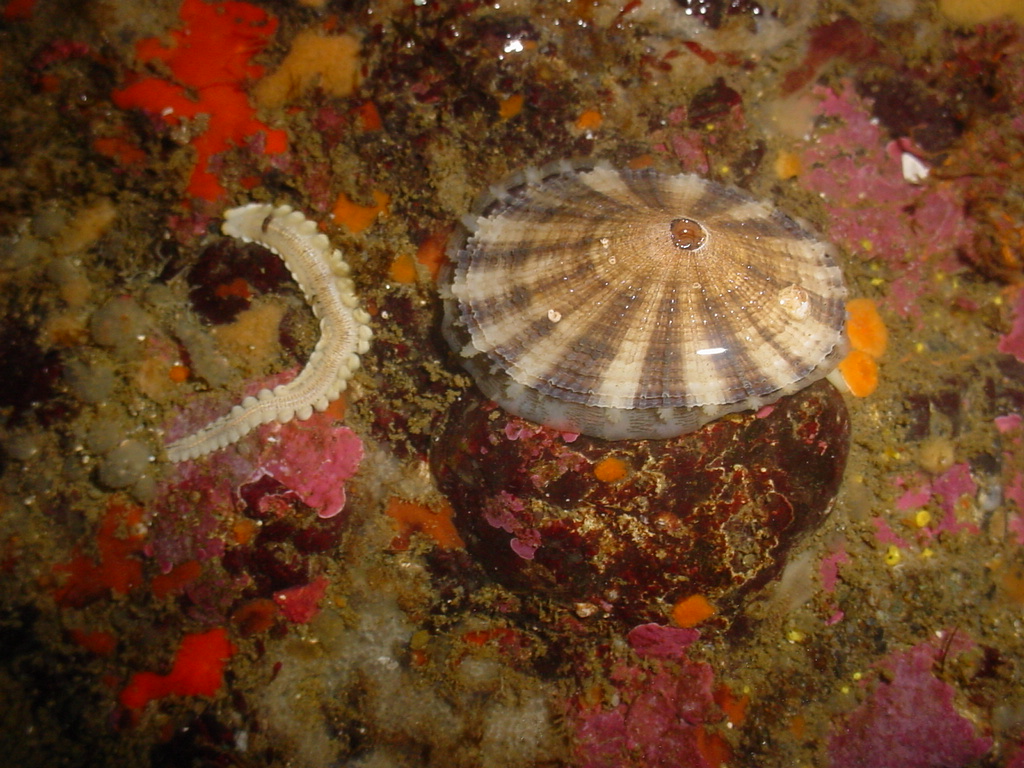
A specimen in a cave at Cape Flattery, 2004 (Dave Cowles), along with
its commensal polychaete flatworm, Arctonoe vittata.
Note
ridges and color pattern on shell.
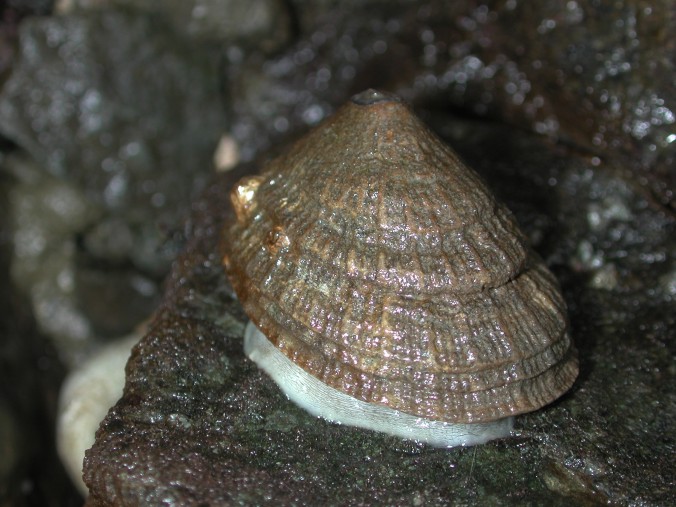
This individual is in the intertidal in Deception Pass. Photo
by Dave Cowles, April 2007
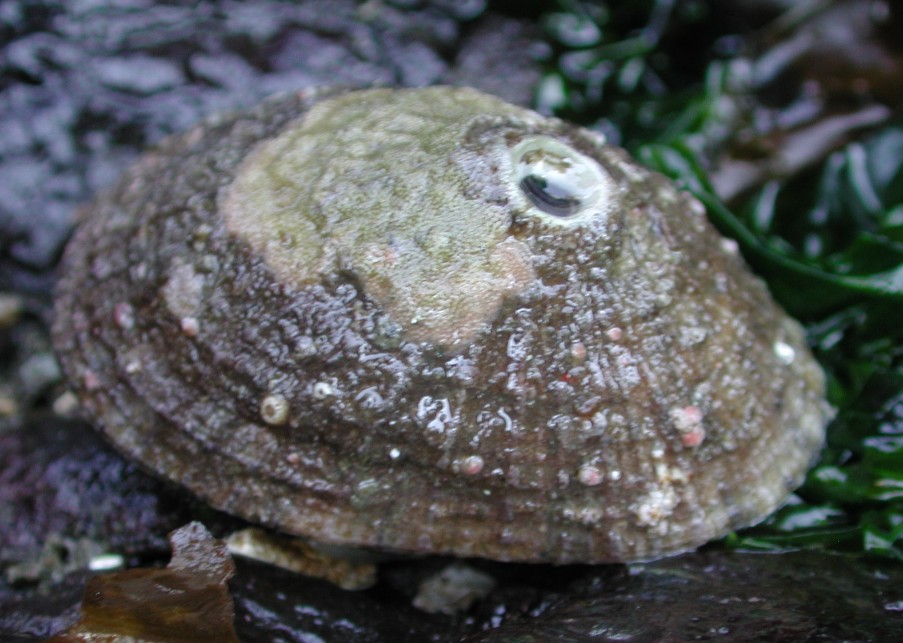
This individual, partly encrusted with bryozoans, was on Swirl
Rocks.
Photo by Dave Cowles, July 2007
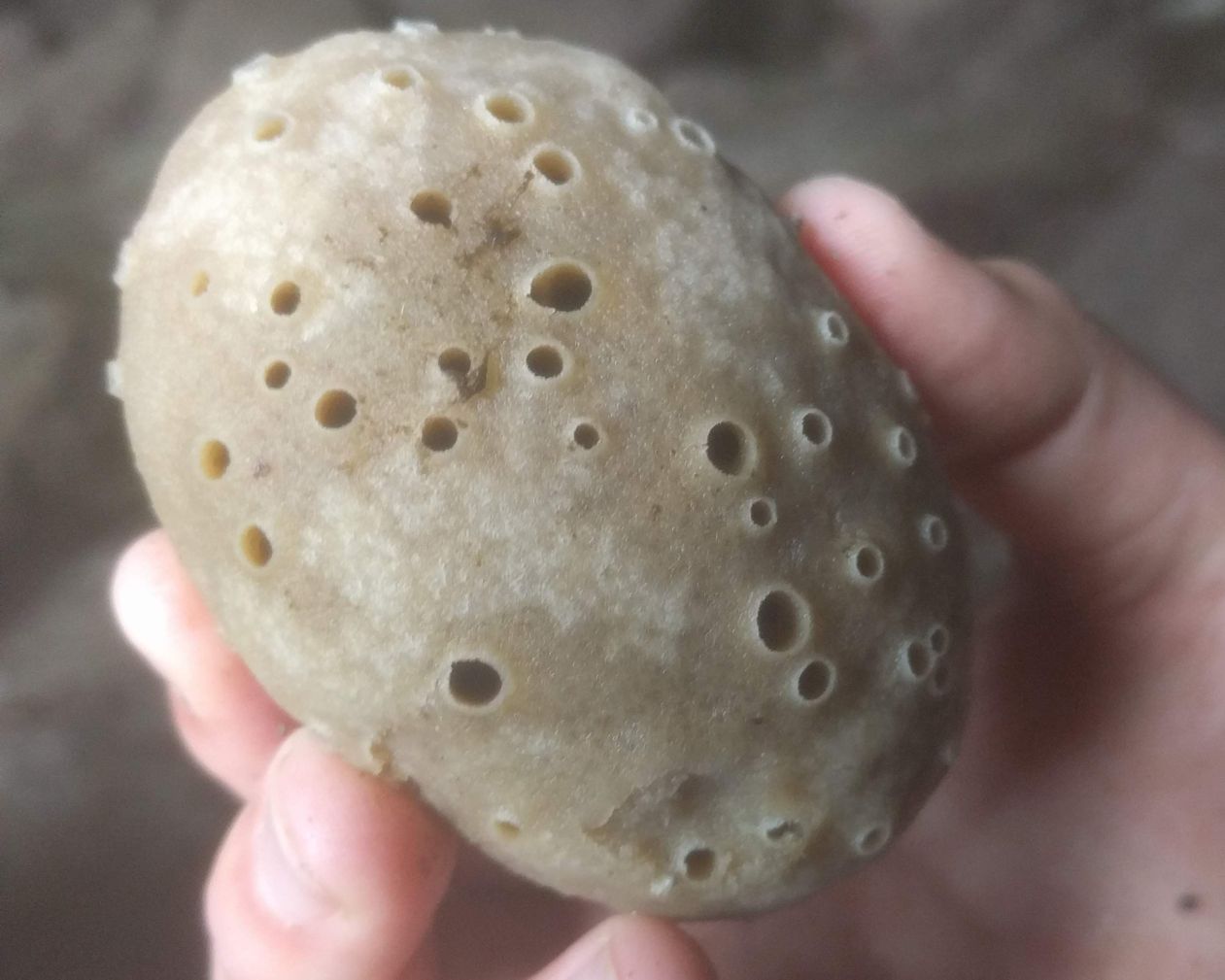
This
keyhole limpet, found intertidally at Cape Flattery, has its shell
thickly overgrown by a sponge so the animal cannot be seen at all
except from underneath. The limpet's foot and the edge of the shell are
exposed on the underside. I did not check to see whether all these
holes in the sponge were oscula or whether there was still a passage
leading down to the limpet's vent. If not, how does this limpet
excrete wastes? I am not certain whether it has a passageway down to
the head region. Photo by Dave Cowles, July 2019
Authors and Editors of Page:
Dave Cowles (2004): Created original page
